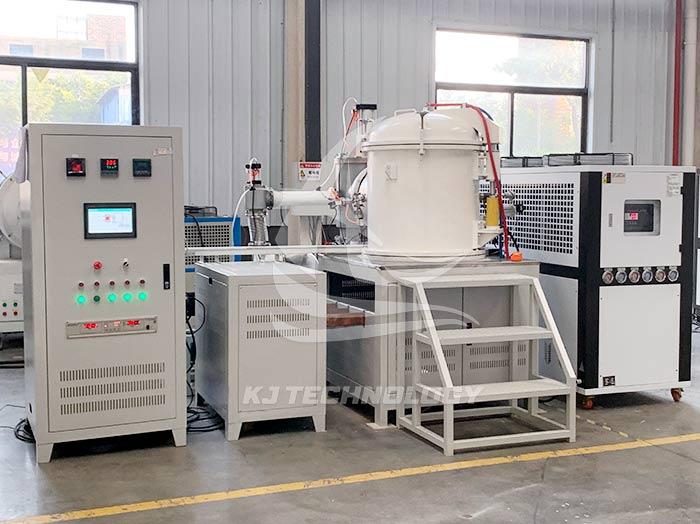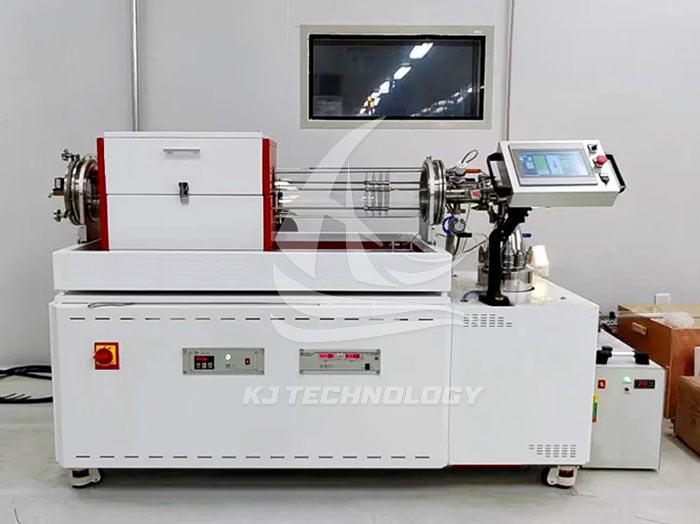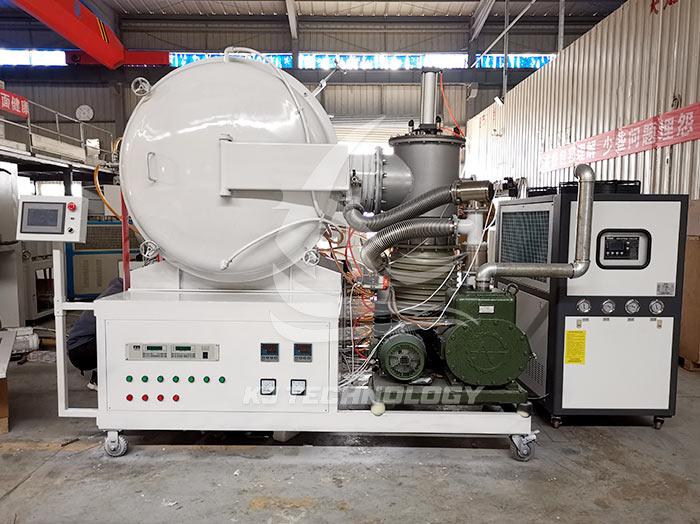Vertical graphite carbon tube vacuum furnace
 10-17-2025 Author: KJ technology
10-17-2025 Author: KJ technology
Vertical graphite carbon tube vacuum furnace is a high-temperature resistance furnace that uses graphite carbon tubes as heating elements in a vacuum environment. Its working principle is based on the resistance characteristics of graphite. By passing current through graphite carbon tubes, heat is generated, causing the temperature inside the furnace to reach high temperatures (usually above 2000 ℃), achieving sintering, heat treatment, or purification of the material. A vacuum environment can prevent materials from reacting with oxygen, water vapor, and other substances at high temperatures, ensuring the purity of the material surface.
1. Core Definition and Working Principle
Vertical graphite carbon tube vacuum furnace is a high-temperature resistance furnace that uses graphite carbon tubes as heating elements in a vacuum environment. Its working principle is based on the resistance characteristics of graphite. By passing current through graphite carbon tubes, heat is generated, causing the temperature inside the furnace to reach high temperatures (usually above 2000 ℃), achieving sintering, heat treatment, or purification of the material. A vacuum environment can prevent materials from reacting with oxygen, water vapor, and other substances at high temperatures, ensuring the purity of the material surface.
2. Structural characteristics
Vertical double-layer shell design
The outer layer is a water-cooled interlayer (made of carbon steel), and the inner layer is made of stainless steel or high-purity alumina fibers, which are cooled by circulating water to prevent overheating and deformation of the furnace shell.
The furnace cover can be opened by spring force for easy loading and unloading of materials.
Graphite carbon tube heating element
The heating element is made of high-purity graphite and is surrounded by a thermal insulation device composed of multiple layers of graphite composite carbon felt or radiation screen to reduce heat loss.
The heating element and graphite electrode are connected in cylindrical contact, with one end of the electrode energized and the other end allowed to expand freely to avoid thermal stress damage.
vacuum system
Composed of mechanical pumps (such as 2X-30 mechanical pumps) and molecular pumps (or Roots pumps, diffusion pumps), it can achieve ultra-low vacuum levels ranging from a base pressure of 5 × 10 ⁻¹ Pa to 2 × 10 ⁻³ Pa.
Equipped with a digital vacuum gauge to monitor the pressure inside the furnace in real-time.
Temperature control system
Using PID controller combined with thermocouple (such as tungsten rhenium thermocouple) or infrared thermometer to achieve precise temperature control (error ≤± 1 ℃ or ± 2 ℃).
Support multiple programmed temperature control curves, with adjustable heating rate.
3. Application Fields
Inorganic material sintering
Vacuum sintering of ceramic seals, silicon carbide, zirconia, zinc oxide, alumina and other materials.
Metal material processing
Vacuum sintering of hard alloys, purification treatment of rare earth elements and their oxides.
Semiconductor and Optical Fields
Sapphire annealing treatment, semiconductor packaging.
Research and pilot production
Suitable for small-scale or pilot production in colleges and research institutions.
4. Advantage analysis
High Efficiency and Energy Saving
The graphite carbon tube heating element has excellent thermal conductivity, low heat loss, and further reduces heat dissipation in a vacuum environment, saving energy and reducing consumption.
High temperature uniformity
The design of insulation and radiation screens reduces thermal radiation interference, and the temperature uniformity can reach within ± 5 ℃.
Material purity guarantee
Vacuum environment avoids material oxidation, volatilization or pollution, and improves product density and surface quality.
Process flexibility
Support multi-stage programmed temperature control, capable of introducing inert or active gases to meet different material processing needs.
Long equipment lifespan
Graphite carbon tube is resistant to high temperature and corrosion, and the insulation device reduces thermal stress and extends the service life of the equipment.
5. Key points of operation and maintenance
Preheating and Cooling
Preheat is required before starting to avoid sudden temperature changes that may cause the furnace to rupture.
During cooling, the rate should be controlled to prevent thermal stress damage.
Vacuum system maintenance
Regularly check the oil level and quality of the vacuum pump, and replace contaminated or oxidized oil.
Clean the vacuum pipeline and valves to ensure sealing.
Graphite component inspection
Regularly check the wear of graphite carbon tubes and electrodes, and replace damaged parts in a timely manner.
Cleaning and maintenance
Use specialized tools to clean up debris inside the furnace and avoid danger caused by manual operation.








